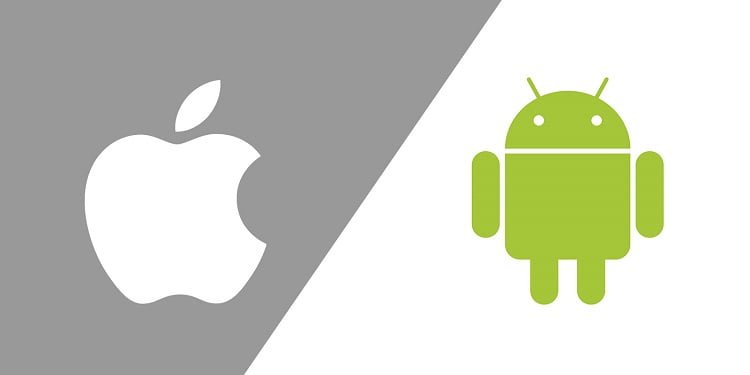When it comes to building a mobile app strategy, the first step is to decide which platform you will focus on, Apple or Android. Or both? Then decide on a pricing plan and marketing campaign. Once you know these basic steps, it will be easier to build your app and promote it.
How to Build Your Mobile App Strategy?
Here are a few more ideas for getting started. Make sure you have a complete plan that focuses on your target audience.
1) Decide if it is for Android or Apple.
The mobile app market is dominated by two popular operating systems: iOS and Google Android. Both are highly popular, with over seventy-four percent market share.
However, iOS is more lucrative for businesses. Its App Store is estimated to generate $46.6 billion in revenue in 2019, whereas Android’s App Store generates $24.8 billion. When building a mobile app strategy, start with iOS first. Whether to target iOS or Android depends on the market and the business goals of the developer. Android has a larger user base than iOS, and the wait time to publish apps is shorter.
The US is home to one of the largest populations of iPhone users, and iPhone users tend to be younger and wealthier than Android users. Thus, iOS is a more desirable choice if your target audience is younger and has a higher revenue per user. However, be sure to keep in mind that iOS development requires regular updates, and you must meet Apple’s software requirements.
2) Choose an Operating System
Depending on your business needs, you may want to choose an operating system based on its popularity. IOS might be your best option if you are a startup because iOS users are more willing to pay for apps. On the other hand, Android users may find an app similar to yours that is free. This strategy is not cheap, and your customer acquisition costs will be higher.
Most Important:- How To Become A Professional Mobile App Developer?
When building a mobile app strategy, you have to consider which platform will benefit your business. IOS has more devices than Android, so the platform is more confusing for the developer. Fortunately, you can subscribe to the Android Weekly Newsletter to stay updated on new software.
Alternatively, you can use mobile development software to build an app that won’t require any coding and usually has thousands of templates ready for you to customize.
3) Decide if it is For Both.
Considering the advantages and disadvantages of building a mobile application for your business, you should know which platform would be best for your product. This way, you will be able to cater to your target market and increase the value and usage of your app.
Knowing the market, you cater to will help you to determine which platform is most suitable for your product or service. Before you start building a mobile app strategy, you should first decide whether it is for business or personal use.
4) Decide on a Pricing Plan.
Pricing strategy for mobile applications is a critical element. Whether you are launching a new app or revamping an existing one, you must make sure your price is competitive and meets your revenue goals. You may have your own revenue generation target in mind. Still, it can be hard to differentiate yourself in the market without a clear understanding of how competitors are pricing their products.
Here are some tips to help you decide what to charge for your mobile application. Pricing strategy depends on human psychology. Some people prefer free products or apps, but others would rather pay for something.
Learn More:- Mobile App Security: Best Practices To Secure Mobile Apps
Besides, your competitors could offer the same service at lower prices and divert your audience’s attention. You should check what your competitors are charging and see if you can offer something better. You can also include complementary services to your mobile app that will draw attention away from your competitors’ offerings.
Also, you should decide on your pricing strategy early on. Regardless of whether you are creating a new app or reselling an existing one, your pricing strategy plays a crucial role in your application’s visibility in app stores and your user retention.
According to Statista, 96.5 percent of apps in Google Play and 92.3% in Apple’s App Store are free. There are several types of mobile apps, and choosing the right one is a critical part of success.
After determining your target audience, you can develop a pricing plan for your mobile app. Pricing your app based on its value is important because you will be spending a large amount of money on it. Make sure to ask yourself if your product is worth the price you are charging. You can also offer a free version of your mobile app to widen your subscriber base.
5) Decide on a Marketing Campaign.
While it’s impossible to create the perfect mobile app marketing strategy, there are some key steps you can take to make your mobile app stand out from the competition. Before you begin creating your app, decide on a marketing strategy. The awareness stage of your mobile app marketing strategy is designed to raise brand awareness and visibility.
This stage should include defining your brand’s messaging and positioning. Brands resonate with their customers based on their purpose and values. By clearly defining your brand’s position, users will be more likely to connect with your product on a deeper level.
6) Decide on a Marketing Strategy.
Once you have decided on a marketing strategy, you can begin to track your competitors and their strategies. Once you have identified the main players in your app category, you can focus on obtaining media coverage. App Annie can help you get insights into which websites and social media accounts influence the market. Once you have identified the key players, you can decide the best time to launch your app.
Also Read:- Mobile App Development Trends To Watch Out in 2022
Regardless of the platform you choose to use. You must have a solid plan for getting your app noticed. You can use email marketing to build a mailing list and send out promotional offers to your subscribers. The goal is to retain users long enough to become loyal customers. Email marketing is the most effective way to build a user base. By using this strategy, you can increase your LTV and ROAS.
You can also consider paid marketing. You can use social media to gain exposure and reach new audiences. Some apps are highly successful on social media and can play the role of publisher and advertiser. For example, Instagram and Twitter are 2 platforms that can help you target specific audiences.
Creating a unique and captivating ad is important regardless of what platform you choose. When you have developed a mobile app strategy that satisfies users’ needs, it’s time to consider how you can increase engagement and downloads.
Decide on a Target Audience.
Deciding on your target audience is essential if you want your app to be successful. This research can help you determine what their pain points are, what they want from an app, and what their needs are. You can conduct focus groups, survey responses, or any other feedback form. Once you have a clear understanding of your audience, you can develop the app and determine your marketing strategy.
In addition to location, determine the type of mobile device your audience uses. High-end devices may allow you to target affluent users with luxury items. Users of iOS devices may be more likely to download your app, as it offers new features that Android users may not be used to.
Relevant:- Best Android Cache Cleaner Mobile Apps You Need To Know
Additionally, determine the way your target audience found your app. It might be organic search, paid ads, or in-app referrals. Also, choose the average revenue per user. The total user base divides by the total revenue generated by the app. This will help you determine how valuable each user is to your app.
Another factor to consider when deciding on your target audience is their educational level. Women, for example, are more likely to play puzzle games than men are. On the other hand, men tend to shop for necessities, while women tend to shop for pleasure.
Conclusion:
Therefore, the target audience you choose is a critical part of your mobile app strategy. When building a mobile app strategy, be sure to consider these aspects, as they will influence the way users perceive your app. While it may be tempting to think that a specific audience is the most relevant for your business, it’s critical to be as specific as possible.
Identifying your target audience requires a clear idea of what you want to offer them. It helps to narrow the field and decide on a strategy based on data and testing. Remember, you are trying to solve a problem or provide an innovation that they want.









